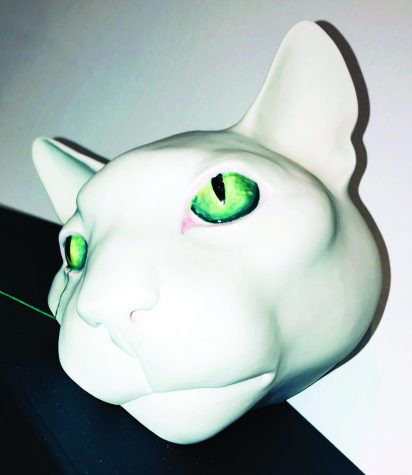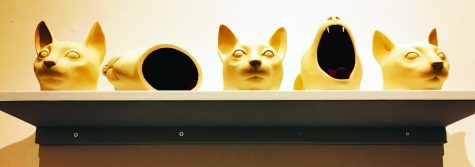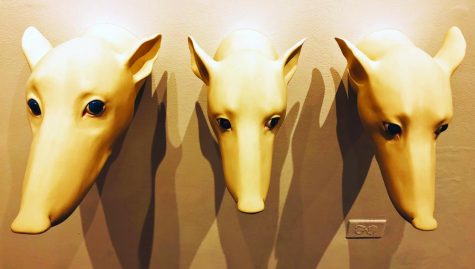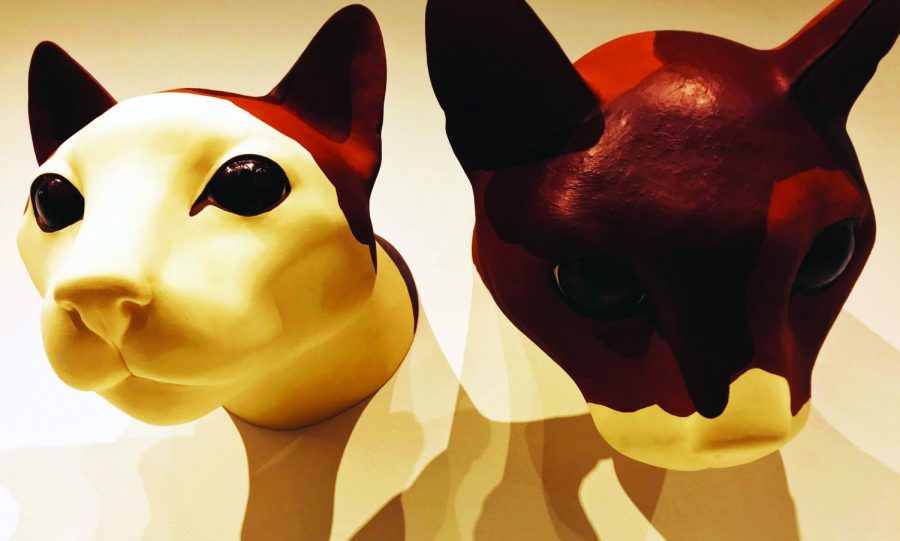Fine Arts gallery displays Marina Kuchinski’s ‘Unbecoming Animals’
Unbecoming Animals
January 28, 2020

Unbecoming Animals
“They live with us, but they’re not us,” says visual artist Marina Kuchinski, who will be exhibiting her show, “Unbecoming Animals,” at the NEIU Fine Arts Gallery through the end of January.
The exhibition, which features ceramic animal heads perched upon the gallery walls, operates as a visual challenge for viewers to dissect the animal-human relationship. Visually disconcerting, Kuchinski expertly navigates our understanding of what is considered culturally acceptable and what is viewed as dystopian: detached animal heads litter the gallery walls, forcing observers to consider the trophy hunting and taxidermy cultures.
However, while Kuchinski states that she questions humans’ attraction toward wildlife trophies, she also says that the underlying meaning is much deeper than recreational hunting. According to Kuchinski, the arrangement is meant to confront the purpose behind domestication and challenge whether such subservience contradicts animalistic instinct.
“(I’m) asking questions about domestication and how humans domesticated animals,” said Kuchinski. “(Humans) created humanized animals. Pets are not wild animals, but they’re not humans so they are somewhere in between.”
“They look like us, but they’re not us. The need of humans to, on the one hand, tame nature but at the same time be part of nature–I’m not against pets, but I’m just asking about humans’ need to dominate nature and dominate animals, but also (show) affection toward those animals; this kind of ambivalent relationship.”
A self-described loving cat owner, Kuchinski says that she goes through artistic phases when determining the subjects of her presentations. At first, Kuchinski gravitated toward dogs, though she has since developed a fascination with feline-centric art. She uses her own pets as templates for her art.
“I also have two cats of my own and they make great live models,” said Kuchinski. “You can work from observation, see their behavior, their form.”

Unbecoming Animals
Kuchinski states that her experience as a pet owner has afforded her an understanding of the double standard of cherishing one species while concurrently harming others. Kuchinski respects the individuality of each animal, whether it’s the personality of a domesticated dog or a wild hog. Yet, according to Kuchinski, humans’ affection toward what are culturally considered household pets oftentimes does not extend to the entire animal kingdom.
“Often, people like their own pets and treat them as individuals, but it doesn’t necessarily mean they love all animals,” said Kuchinski. “For example, you can have pets. But why is okay to eat a chicken, but not your cat or your dog? I’m not making statements, but rather asking questions about those relationships.”
Kuchinski also cites the relativity of culture as an underlying reason why we favor some species while sending others to the slaughterhouse.
For example, some cultures consider rabbits to be a cuisine while others invite rabbits into their homes. She also dismisses the idea that such determinations are based on intellect or capacity for affection.
“Pigs are very smart animals, smarter than dogs,” said Kuchinski. “So they can be a pet or food. In some cases, you can have a farm and first have a little pig as a pet and later, we’re eating it.”
Kuchinski also says she works to inspire open debate. While Kuchinski’s imagery is both jarring and confrontational, it also addresses a myriad of unanswered questions.
“I want my work to be ambiguous,” said Kuchinski. “I don’t want my art to have just one meaning. I tap into animal ethics and animal studies and philosophical questions of animal-human relationships, but I want the viewers to have their own reading of my work, as well.”

Unbecoming Animals








